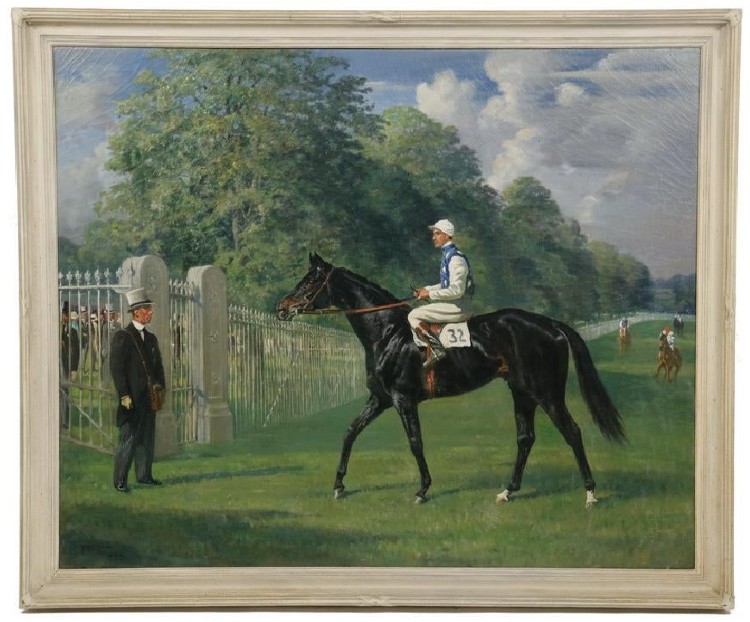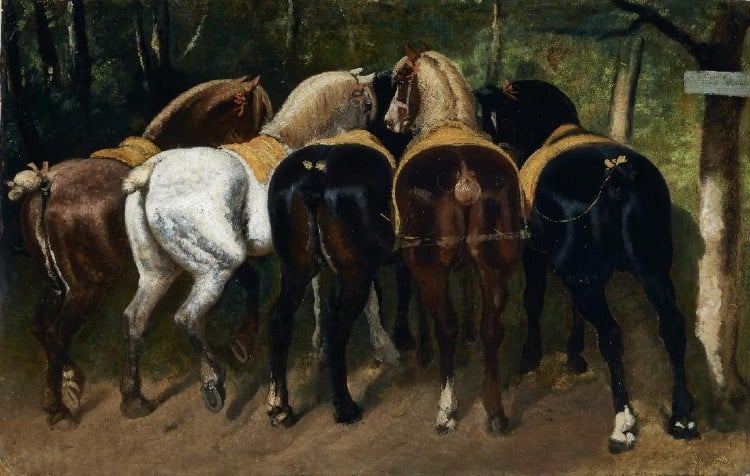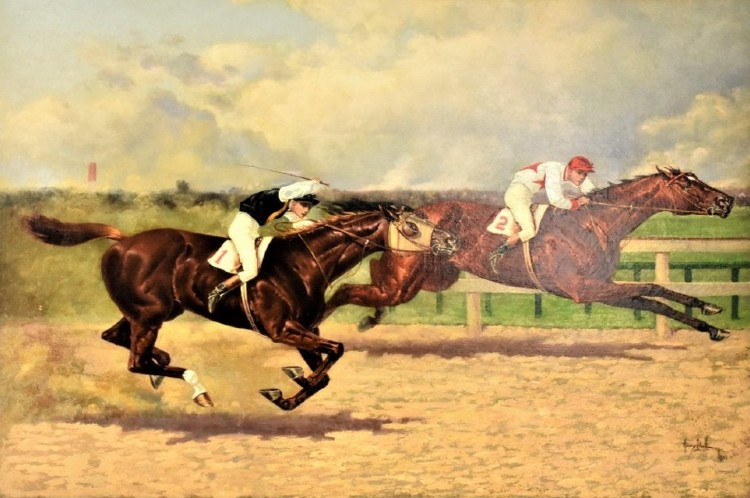
NEW YORK – While images of hunting dogs may first come to mind when thinking of sporting art, horse portraits have long been a storied tradition. Whether it’s a champion jumper, a thoroughbred that won the Kentucky Derby or a beloved family horse that only goes on trail rides, there is great demand and enthusiasm for equine portraits.
Among the most renowned equine painters was Sir Alfred James Munnings (British, 1878-1959). Several of his paintings easily achieved six-figure sums at auction. In October 2020, his painting of 1936 Epsom Derby winner Mahmoud brought a robust price of €450,000 at a Christie’s Paris auction. On LiveAuctioneers’ price results database, Munnings has several paintings that realized well over $200,000 each, led by a 1928 portrait of Mon Talisman at Chantilly that sold for $240,000 + the buyer’s premium in November 2015 at the Sporting Art Auction, based in the heart of American horse racing country, Lexington, Kentucky.

“Though this painting of Mon Talisman is what Munnings himself would have called a cut and dry horse portrait, there are several compositional aspects that make this painting an exceptional work,” according to the auctioneers in its lot description.
The groom and horse are both shown in profile but the horse looks slightly toward the viewer and his muscular athletic body is shown to full effect. The artist was skilled at using pastel hues to sculpt highlights into the horses’ coat in his portraits and reportedly was the first of his contemporaries to do so.
The time Munnings spent painting racehorse champions in France’s Chantilly region was a favorite for the artist and he is said to have enjoyed painting en plein air there. Munnings painted his first racehorse in 1919 and within a decade, these artworks were highly sought after.
While Munnings created commissioned portraits for society’s elite, he retained a keen appreciation for animals and landscapes, perhaps more befitting a farmer or one used to living in the countryside.

Other British artists earning a respectable living from profitable equine portrait commissions from wealthy horse owners included Ben Marshall (1768-1835). He is said to have once quipped that he knew “many a man who thinks 10 guineas too much for painting his wife [but] will pay 50 guineas for painting his horse.” Also collectible are works by John Frederick Herring Sr., whose paintings range from more than $20,000 to $50,000 at auction. Oil paintings such as his 1835 portrait of the handsome and very muscular Plenipo, with his rider sitting up tall, demonstrate his talent. The painting brought $25,000 + the buyer’s premium in November 2015 at the Sporting Art Auction.
Among American artists specializing in this field was Henry Stull (1851-1913), who was active in New York, Kentucky and Canada. Best known for his racehorse paintings, Stull spent time in Europe painting circa 1900. There, he painted commissions for patrons and customers, including a winning horse owned by Edward, Prince of Wales, Diamond Jubilee, an English triple crown winner. American Diana Tremaine (b. 1964) has built a steady auction following also for her equine paintings, in particular, for her portraits of an escort horse known as Harley at Churchill Downs and Keeneland.

Horse breeders began to breed Arabian stallions with English mares in the early half of the Eighteenth Century, creating desirable lines of thoroughbred racehorses. During the same time, artists like Munnings, Marshall, Theodore Gericault, George Stubbs and others created a robust niche market for themselves painting these steeds.
As a subject, horses can be challenging to artists unfamiliar with horse anatomy, from how to properly convey the animal’s underlying power to their coats, which are typically dappled with highlights in varying hues. Painting en plein air and deftly capturing a horse’s rippling muscles, its grace, strength and lively features, equine portraitists have turned images of horses into realistic portraits, rather than idealized depictions.

Close-up portraits of horses as well as full-body depictions, with his owner or jockey astride, are desirable today as well as mid-race scenes that convey the excitement and intensity of horses and riders going all-out amid dramatic landscapes. While not an artist who specialized in horses, even noted illustrator N.C. Wyeth got in on the act with his painting, The Horse Race, that went for $425,000 + the buyer’s premium in November 2014 at the Sporting Art Auction.
While the art of horse portraits may have had its roots in the aristocracy a century ago, the tradition lives on with contemporary artists as well as collectors seeking out beautiful portraits from antique to modern to grace their walls.
# # #


